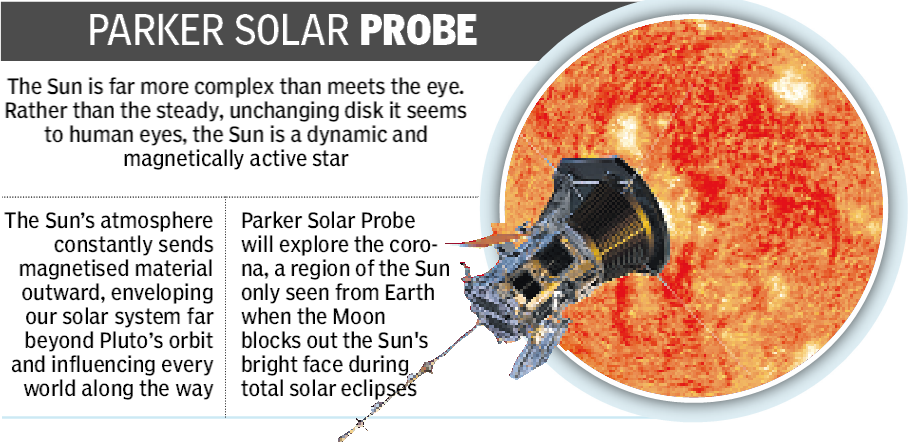Washington: NASA is on schedule to launch mankind’s first mission to the Sun – a car sized probe that will swoop to within 4 million miles of the solar surface, facing heat and radiation like no spacecraft before.
The Parker Solar Probe, which is expected to take off no earlier than August 6 aboard United Launch Alliance Delta IV Heavy, will study the Sun closer than any human-made object ever has.
“We’ve been studying the Sun for decades, and now we’re finally going to go where the action is,” said Alex Young, associate director for science in the Heliophysics Science Division at NASA’s Goddard Space Flight Center in the US.
Our Sun is far more complex than meets the eye. Rather than the steady, unchanging disk it seems to human eyes, the Sun is a dynamic and magnetically active star. The Sun’s atmosphere constantly sends magnetised material outward, enveloping our solar system far beyond the orbit of Pluto and influencing every world along the way.
Coils of magnetic energy can burst out with light and particle radiation that travel through space and create temporary disruptions in our atmosphere, sometimes garbling radio and communications signals near Earth.
The influence of solar activity on Earth and other worlds are collectively known as space weather and the key to understanding its origins lies in understanding the Sun itself.
“The Sun’s energy is always flowing past our world. And even though the solar wind is invisible, we can see it encircling the poles as the aurora, which are beautiful – but reveal the enormous amount of energy and particles that cascade into our atmosphere,” Nicky Fox, Parker Solar Probe’s project scientist at the Johns Hopkins University Applied Physics Lab.
NASA set to launch first mission to touch Sun
